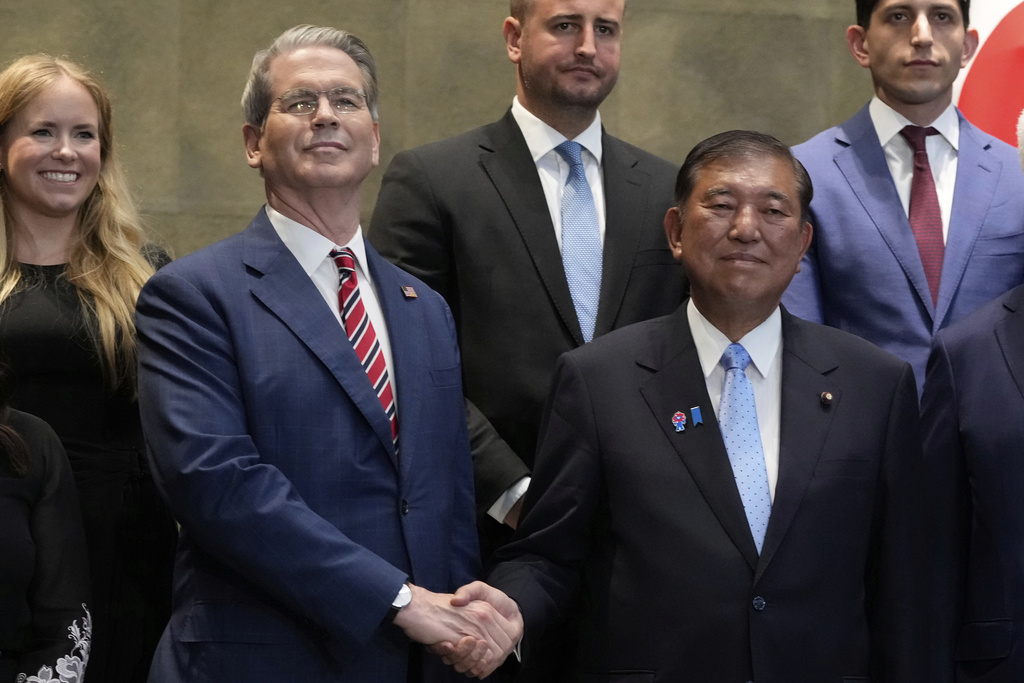In a move that has caught significant attention, President Donald Trump declared a new trade agreement with Japan this Tuesday. Under this framework, a 15% tax will apply to goods brought in from Japan, changing the earlier proposed 25% rate.
On Truth Social, Trump enthusiastically claimed, “This Deal will create Hundreds of Thousands of Jobs — There has never been anything like it!” He asserted that America will maintain a strong relationship with Japan through this arrangement.
As part of the deal, Japan is expected to invest around $550 billion in the US. Trump highlighted that Japan would also be making its market more accessible to American exports like cars and rice. This change appears to be a strategic decision aimed at enhancing trade flow and job creation within the US economy. The lessened tax rate is a significant concession from Trump’s earlier threats to impose a higher tariff starting August 1.
Although the announcement seeks to amplify Trump’s reputation as an effective dealmaker, it recalls earlier incidents when the news of tariff plans led to market turmoil and anxieties about a slow in economic progress. Interestingly, it remains uncertain if cars manufactured in Japan will still be subjected to the previous 25% tariff affecting that sector.
Amid ongoing discussions, Trump has showcased his firm stance regarding tariffs, which he presents as a victory for the US economy. Administration officials predict that the tariff revenue could alleviate the national budget deficit and incentivize factories to relocate to the US in response to the mitigation of trade issues.
However, these tariff regimes contribute to increasing hesitancy among consumers and businesses regarding potential price hikes, as companies may share the burden of the new costs. This risk was made apparent on Tuesday when General Motors witnessed a significant decrease of 35% in its net income for Q2 and expressed concern over how future tariffs could impact its profits, leading to drops in its stock value.

As the August 1 deadline inches closer for these tariffs’ implementation, Trump also introduced a trade framework with the Philippines, which will see a 19% tariff applied to their goods, while exports from the US will be free from such taxes. Additionally, Trump reaffirmed the same tariff rate for Indonesia.
Last year, the US faced a staggering trade deficit of $69.4 billion with Japan according to data from the Census Bureau. Comparatively, the US trade deficit was $17.9 billion with Indonesia and $4.9 billion with the Philippines — highlighting an ongoing pattern where America imports more than it exports with these nations.
Looking ahead, Trump is set to enforce the previously outlined tariffs in his communications with global leaders come August 1, stirring questions on possible progress in ongoing discussions with the EU. At a dinner on Tuesday, he mentioned, “We have Europe coming in tomorrow, the next day.”
Previously, Trump issued a daunting letter to the 27 member countries of the EU, warning of potential 30% tariffs on their imports effective August 1.
Meanwhile, the Trump administration is engaged in parallel trade negotiations with China due to end on August 12, particularly concerning an added 30% tax on goods from that country. Treasury Secretary Scott Bessent announced plans to travel to Stockholm next week for talks with Chinese officials aimed at fostering a shift in the American economy from merely consuming to engendering more domestic manufacturing.
On the Fox Business Network show “Mornings with Maria,” Bessent emphasized, “President Trump is remaking the U.S. into a manufacturing economy. If we could do that together, we do more manufacturing, they do more consumption. That would be a home run for the global economy.”





















